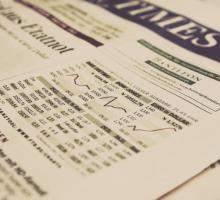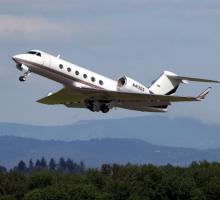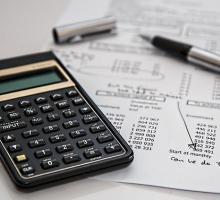The nominal exchange rate is defined as:
The number of units of the domestic currency that are needed to purchase a unit of a given foreign currency.
For example, if the value of the Euro in terms of the dollar is 1.37, this means that the nominal exchange rate between the Euro and the dollar is 1.37. We need to give 1.37 dollars to buy one Euro.
It’s called nominal, because it takes into account only the numerical value of the currencies. It doesn’t take into account the purchasing power of the currencies. There is another exchange rate called “real exchange rate” that takes the purchasing power into account.
Nominal Exchange Rate Formula
There is no special formula for the nominal exchange rate, it’s just a number without additional mathematical operations.
Where:
C: Domestic Currency
C*: Foreign Currency
Fluctuations of the nominal exchange rate
When a currency appreciates, this means it’s now more expensive than before. If the Euro appreciates, we have to give more dollars to buy one Euro. The exchange rate, from the American point of view, raises.
The opposite happens when a currency depreciates: the exchange rate falls.
Why does the exchange rate rise and fall?
In every country, individuals, companies, financial institutions and governments buy and sell currencies. Exporters sells good and services abroad. Importers buy goods and services from abroad. Individuals and institutions buy foreign currency as an investment or buy financial assets abroad. Central banks buy and sell foreign currency to avoid large exchange rates fluctuations.
All buyers represent the demand of foreign currency, whereas the sellers represent the supply. The exchange rate is the price of the foreign currency, in terms of the local currency. This price is determined buy the supply and the demand.
In some countries, the central bank determines an official exchange rate, and financial institutions must buy and sell at this exchange rate.
Importance of the exchange rate
When the nominal exchange rate raises, imports become more expensive and exports become cheaper to foreigners. In the short term, the amount of imports falls and the amount of exports raises. This can increase the employment.
The depreciation of a currency can lead to higher inflation. Since imports have become more expensive and a lot of good and services made locally need imported goods to be made. Also, tradable goods can be sold more expensive abroad.
The nominal exchange rate also influences the flow of capital between countries and interest rate. It affects investments, economic growth and welfare of people.
How to Check the Current Nominal Exchange
You can check the Nominal Exchange Rate using our online currency converter. A currency converter is a tool designed to convert an amount of a specified currency into the corresponding amount of another currency.
If you input 1 as the amount, you will see not only the corresponding amount in foreign currencies, but also the current nominal exchange rate. For example, at the moment of writing this article, 1 USD is equivalent to 0.855 Euro. The nominal exchange rate is 1/0.855 = 1.170 USD/EUR.
Our tool will give you:
- The equivalent amount in the desired currency 0.855 EUR
- The value of one unit of currency in the most important currencies: Euros, Australian Dollars, British Pounds Sterlings, Canadian Dollars, etc.
- The nominal exchange rate between the desired currency and the most important currencies.




